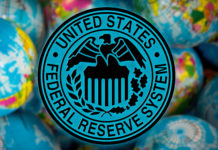Key insights from the week that was.
This week, we received updates on consumer and business confidence and the labour market for Australia. Offshore, a string of 50bp rate hikes were seen across the US, Europe and the UK.
The December Westpac-MI survey reported a welcome 3% lift in consumer sentiment; although at 80, confidence amongst households remains comparable to the low points seen during the pandemic and the GFC. Inflation remained the primary concern of households, though ‘budget and taxation’, ‘economic conditions’ and ‘interest rates’ were also prominent. All of these factors are likely contributing to the weak state of family finances which, versus a year ago and for the year ahead, are respectively 25% and 19% below long-run average levels despite a strong labour market (see below) and favourable expectations for employment. In turn, households’ financial concerns are restricting their plans for major purchases, with ‘time to buy a major household item’ 33% below average.
The November labour force survey provided the largest domestic surprise this week. Against the market consensus for a 19k gain in employment, a striking 64k jobs were created in the month. Additionally, the 71k increase in the size of the labour force saw the participation rate return to a historic 66.8%; the employment-to-population ratio print a fresh record high of 64.5%; and the underemployment rate – which has lagged the broader recovery to date – fall 0.2ppts to 5.8%. Clearly, Australia’s labour market is a resounding source of strength for households as the year draws to a close, echoed by favourable expectations for employment in the Westpac-MI survey. Note though, with the unemployment rate holding firm at 3.4% in November, Westpac’s forecast for a quarter-average unemployment rate of 3.3% will be harder to achieve given the unexpected strength in participation.
It is promising to see the continued recovery in immigration flows and growth in the working age population consequently rise well above pre-pandemic levels to 2.0%yr. Being derived from estimates of Australia’s overseas arrivals and departures, the solid recovery in migrant flows is resulting in significant upward revisions to the size of the Australian labour force. It is worth mentioning that net arrivals are holding at very high levels among temporary workers (+13.5k/mth average) and students (+17.7k/mth average) after many months of significant net outflows due to the pandemic. Should the strength in net visa arrivals be sustained, the severe labour constraints facing businesses can be alleviated in time, thereby facilitating the longer-term recovery of the Australian economy.
In terms of the outlook, Chief Economist Bill Evans discussed the key implications from the consumer sentiment survey for consumption and housing in his video update this week. The evolution of both consumer demand and business conditions in 2023 was also the primary focus of our December Market Outlook in conversation podcast. For a full view of our forecasts for 2023 and 2024, see the December 2022 & January 2023 Market Outlook.
Moving offshore, first to New Zealand. GDP grew by a very strong 2% in Q3, more than twice the market and RBNZ expectation. As detailed by our New Zealand Economics team, GDP is now 8% above its end-2019 level, prior to the pandemic, with half of this gain coming in the last two quarters as international tourism returned. In Q3, solid-to-strong gains in activity were also seen outside of tourism-related sectors, highlighting the strength of current momentum in New Zealand’s economy. With supply still constrained, this result supports the view that the RBNZ will open 2023 with another large increase in the cash rate (75bps at the February meeting) even as other major central banks slow their pace of tightening and begin to consider drawing their hiking cycles to a close.
Over in the US, debate over the peak for fed funds and how quickly rate cuts will follow rages on. The updated economic forecasts of the FOMC make clear that the Committee remains resolute in their determination to fight inflation (a peak of 5.1% for fed funds now seen in 2023, to be followed by only modest cuts in 2024) as their assessment of price risks remains tilted to the upside. Still, in the press conference, Chair Powell made clear that their decisions would be data dependent and materially reduced the duration of his comments regarding financial conditions.
On the latter, whereas getting term interest rates well into contractionary territory has been his focus for the past year, in this press conference Chair Powell’s response to a question on financial conditions was focused on fed funds, the overnight policy rate. Arguably, this points to a recognition that, late in the tightening cycle, the market inevitably will price in the timing and scale of the rate cuts to come. Managing these expectations is critical to getting inflation back to target and doing so without a lasting hit to activity. Regarding activity growth, it is clear that both the FOMC and the market is becoming more concerned. The FOMC now only see cumulative growth through 2022 and 2023 of 1.0%; though, highlighting the downside risks present, that is still twice Westpac’s expectation. The data released this week also spoke to these downside risks. Of particular significance, control group retail sales fell 0.2% in November and October’s gain was revised down.
In Europe, the ECB delivered a 50bp rate hike across all policy rates as widely anticipated, slowing from the 75bp pace of the prior two meetings. However, a clear hawkish shift was adopted within the accompanying statement and the following press conference, with President Lagarde advocating for large, sustained increases in interest rates over the period ahead. Indeed, the Governing Council’s updated macroeconomic projections continue to paint a bleak picture for the outlook. That inflation is not expected to return to the medium-term target of 2% over the forecast horizon (6.3% in 2023; 3.4% in 2024 and 2.3% in 2025) suggests a growing concern over the structure and pace of core inflation, which itself held firm at 5.0% in November. Reinforced with plans to reduce the APP portfolio from March 2023, the ECB’s tightening cycle will likely run further into 2023, but this will depend crucially on the flow of data over the next few months as the Governing Council gauges the evolution of inflation pressures and resilience of the economy over winter.
The Bank of England meanwhile provided relatively fewer surprises, also slowing the pace of tightening to 50bps in December. The decision statement was very similar to that of last month, the Committee stating that the economy is evolving broadly in line with the projections laid out in the November report. The dovish shift in the voting profile (6-3 for 50bps in December; 7-2 for 75bps in November) had little market impact, with any signal of a shift of sentiment within the Committee being overshadowed by the still formidable inflation outlook that warrants further increases in interest rates over coming months.
A final note on China. This week we have continued to see further progress away from COVID-zero, with broad-based regular testing for the virus resigned to the past. Authorities are also making a concerted effort to hold up then stoke confidence in the outlook as COVID-19 spreads across the country, inevitably causing health consequences for at-risk groups. For our growth expectations to be met for 2023, confidence amongst households must be robust, else they continue to choose to stay home and not spend. How consumption responds a month or two after the removal of restrictions will determine the skew of risks for household demand in 2023. That in turn will give a guide on the likelihood of an upturn in domestically-focused investment, across the business sector and for housing. As outlined in Market Outlook, the global green transition and Asia’s structural development are creating broad-based and long-lasting export opportunities for China. But the initial wave of investment could prove bumpy given both domestic and global uncertainties, even with the policy stance highly accommodative and China’s competitiveness improving ahead of anticipated FX appreciation.
This is the last edition of Cliff Notes until late January 2023. Merry Christmas and best wishes for 2023.












